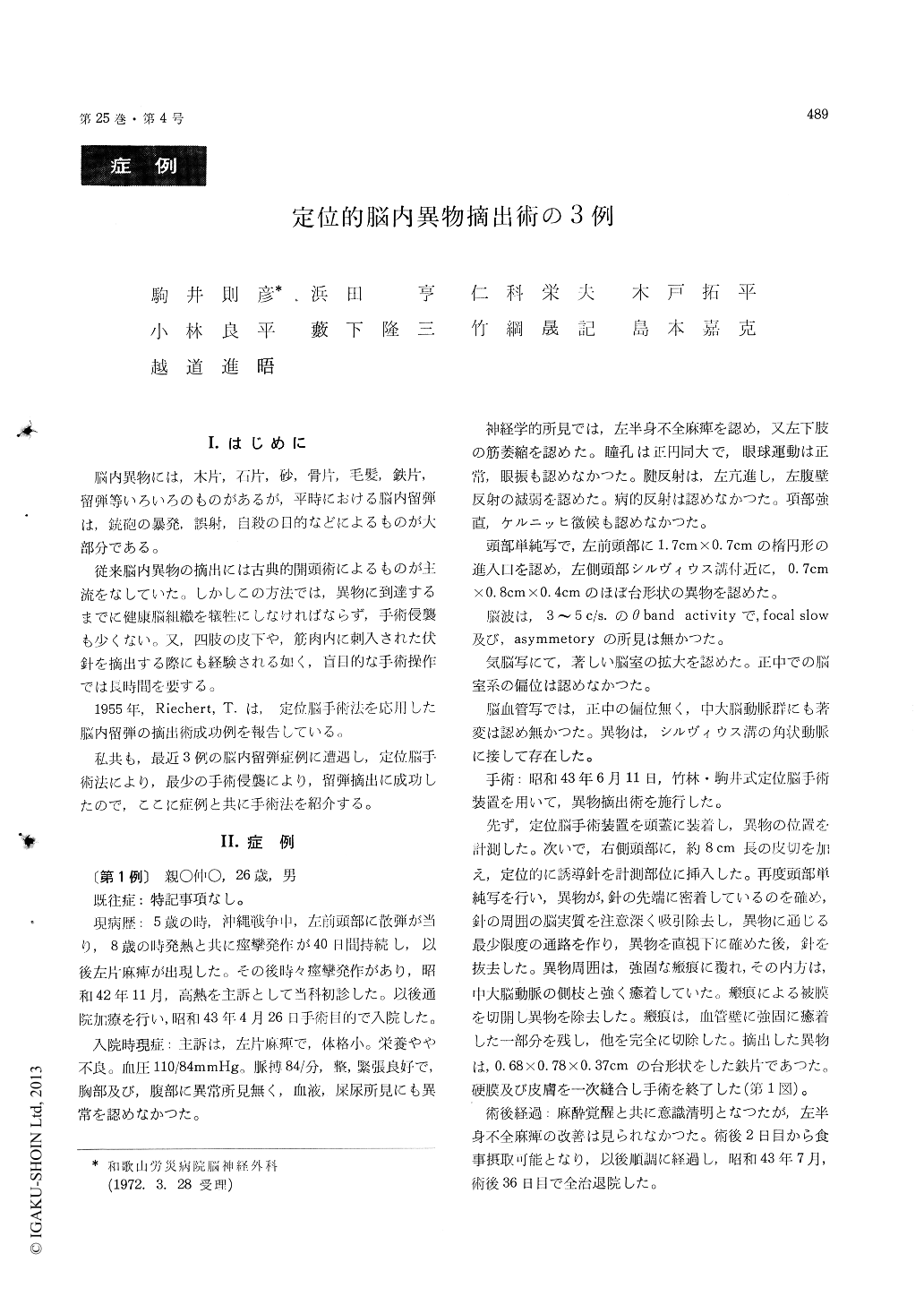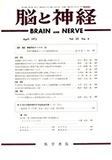Japanese
English
- 有料閲覧
- Abstract 文献概要
- 1ページ目 Look Inside
I.はじめに
脳内異物には,木片,石片,砂,骨片,毛髪,鉄片,留弾等いろいろのものがあるが,平時における脳内留弾は,銃砲の暴発,誤射,自殺の目的などによるものが大部分である。
従来脳内異物の摘出には古典的開頭術によるものが主流をなしていた。しかしこの方法では,異物に到達するまでに健康脳組織を犠牲にしなければならず,手術侵襲も少くない。又,四肢の皮下や,筋肉内に刺入された伏針を摘出する際にも経験される如く,盲目的な手術操作では長時間を要する。
Abstract
Three cases were reported in which the intra-cranial foreign body was surgically removed usinga stereotaxic method.
Case 1. Patient N. O. 26-year-old male
The patient had suffered from a war-time injury caused by a fragment of a bombshell 21 years ago. The fragment remaind in the brain after penetrat-ing left temporal cranium. Since a few years ago an occasional attack of fever-up and convulsion appeared which left him left hemiplegia and attacks of epileptic seizure. By an examination, the foreign body was located in the right temporal of the brain and it was surgically removed using a stereo-taxic method. The foreign body was an iron fragment and was firmly adhered to the medial cerebral artery. In the surgery, a tunnel was made along the guid needle which was inserted stero-taxically and the foreign body was removed under the direct observation.
Case 2. Patient H. Y. 24-year-old male
The patient shot himself at the right frontal head by an air-gun for the purpose of self-suiside. The ballet was located in the right frontal lobe of the brain and was surgically removed using a steretaxic method and a specially designed grasping forceps.
Case 3. Patient Y. S. 26-year-old male
The intracranial foreign body of the patient was a fragment of cartridge which penetrated the left frontal lobe of the brain during an accidental ex-plosion. The foreign body was surgically removed using the same method as in the case 2.
All three cases reported here showed no paticular complication after stereotaxic surgery and the method appeared to be successful one in removing intracranial foreign body with minimal lesion.

Copyright © 1973, Igaku-Shoin Ltd. All rights reserved.


